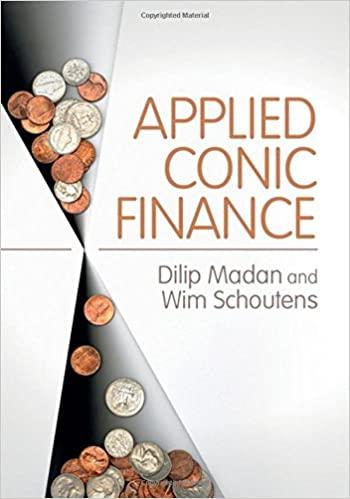Question
DB #3: Examining Differences between Cash Flow and Earnings: If you have experienced a ride on the tube (the subway system) in London you were
DB #3: Examining Differences between Cash Flow and Earnings: If you have experienced a ride on the tube (the subway system) in London you were probably surprised by the kind reminder when the train arrives at the station. As the train stops you are reminded to "Mind the Gap," the gap being the distance between the train and the station platform. A gentle reminder issued by polite voice than warns you to be careful and watch your step when leaving the train. A recent article in CFO Magazine issues a similar warning to the GapPreview the documentView in a new window between earnings and cash flows. The article warns of a potential disconnect between earnings and cash flow that is important when analyzing a company's performance. After reading the article, answer the following questions: The article points out that it may be important to compare top-line and bottom-line growth. What is the difference between top and bottom-line growth? What factors could lead to a difference in top- and bottom-line growth?
and so consider them one-time events that have little bearing on a company's ongoingfortunes. Whether such gains should be ignored is another matter. Some analysts contendthey should not be, at least under narrowly defined circumstances. In the February issue of SoundBytes, a technology newsletter published by Credit Suisse FirstBoston, analyst Michael Kwatinetz argued that Cisco Systems Inc.'s investment portfolio, forinstance, should be considered part of its ongoing business under four conditions. First, theamount of gains realized in a given quarter must be less than 7 percent of the total (thereforeforeshadowing about four years of such gains). Second, the company must intend toconsistently take this level of gain. Third, the gains must be a result of investments in relatedbusinesses. And fourth, the company's investment track record must support the notion thatfurther gains are likely. Because Cisco's investment portfolio meets all four conditions,Kwatinetz wrote, "we believe it's operational in nature." Motorola, for its part, evidently believes its own gains pass muster. How else to explain thefact that such income is used to reduce the figures it reports for sales, general, andadministrative expenses? Again, that isn't necessarily a violation of GAAP. "This use ofinvestment gains is usually disclosed in a footnote," says another analyst. But he notes thatthat's sufficient for purposes of GAAP if the company can claim the impact isn't material. Motorola is far from alone in masking operating weaknesses in this fashion. IBM, for instance,used the gain on the sale of Global Network, its telecommunications technology business, toAT&T to reduce its SG&A in 1999 by $2 billion. Cost cutting, of course, translates into moreoperating cash flow as well as net income. But again, critics contend the accounting treatment,while not a technical violation of GAAP, is misleading. And the fact remains that IBM's growthin operating cash flow for the three years that ended last March trailed that of its net incomeby 35 percent. (At #102, IBM narrowly missed inclusion in our list.) Some companies on the list that have significant investment gains don't account for them inthis fashion. Texas Instruments, for example, enjoyed a big gain from selling a piece of itsequity holding in Micron Technology Inc. earlier this year, a stake it acquired in return forselling Micron its memory-chip business in 1998. TI still holds quite a bit of Micron stock. Butrather than treat the recent gain as part of its operations, using it to reduce its SG&A andboost its operating income, TI chose to account for it as an extraordinary item. By treatingsuch nonoperational results as noncash items, says CFO Aylesworth, "we get to operatingresults that are most meaningful." But other companies whose cash flow from operations has lagged far behind their net incomehave employed less meaningful means of reporting their results. DuPont (#79), for instance,switched from accelerated to straight-line depreciation in January 1995, which boosted itsearnings without any improvement in its operating cash flow, according to Paul Leming, ananalyst for ING Barings. What's more, says Leming, DuPont "constantly" uses nonrecurringitems such as restructuring charges to make its net income look better than cash flow wouldsuggest. Citing quarterly statements that are typically accompanied by dozens of explanatoryfootnotes, Leming says DuPont is "one of the worst abusers of recurring nonrecurring items,"though he is quick to note that "it's all GAAP."
Step by Step Solution
There are 3 Steps involved in it
Step: 1

Get Instant Access to Expert-Tailored Solutions
See step-by-step solutions with expert insights and AI powered tools for academic success
Step: 2

Step: 3

Ace Your Homework with AI
Get the answers you need in no time with our AI-driven, step-by-step assistance
Get Started


